70050 FM-1 & FM-2 Wildcat ™ Deluxe Set!
- Add feedback: (See the reviews)
- 70050
- Manufacturer: Arma Hobby
-
Availability:
Unavailable
Delivery time: 1-3 days
- Type: Aeroplane kit
- Medium: plastic + accessories
- Scale: 1/72
- Remarks: Grumman® Wildcat™ is a trademark of Northrop Grumman Systems Corporation and is used under license by Arma Hobby.
Double set of Wildcat kit with photoetched parts, masks and two escort carrier decks.
Buy together to pay less
Double combo. Set includes two different versions of Wildcat, with photoetched parts and masks for each of them. Extra photoetched parts for FM-1 conversion. Two carrier flight deck sections from plywood.
Box includes
- one set of FM-2 plastic parts
- one set of F4F-4 plastic parts with conversion to FM-1
- Photoetched parts for both models
- Canopy and wheel masks for both models
- Decals with eight markings options (four for each version)
- Two laser engraved plywood flight deck sections from "Casablanca" class escort carrier14.5 x 14.5 cm
Markings options:
FM-1 Wildcat:
- FM-1 Wildcat, no. A32/S31, VC-33 squadron, USS Nassau CVE-16, 6 September 1943, during training on the California coast, shortly before embarkation on USS Coral Sea CVE-57.
- FM-1 Wildcat, no. 7, VC-6 squadron, USS Core CVE-13, 16 December 1943, during anti-submarine patrols over the North Atlantic.
- Wildcat V, no. JV439/C9-N, 733 Naval Air Squadron, piloted by Sub-Lieut. Griffiths, Trincomalee airfield, Ceylon, 1945.
- Wildcat V, no. JV579/F, “That Old Thing”, 846 Naval Air Squadron, aircraft carrier HMS Trumpeter/Eglington airfield. The unit provided anti-submarine cover during the Normandy landings of June 1944.
FM-2 Wildcat:
- FM-2 Wildcat, no. D6, “Judy”, VC-14 squadron, USS Hoggatt Bay CVE-75, the Philippines, 22 November 1944.
- FM-2 Wildcat, no. 8, “Hot Lips”, VC-99 squadron, USS Hoggatt Bay CVE-75, Pacific Ocean theatre, July 1945.
- FM-2 Wildcat, no. 4, VC-13 squadron, USS Tripoli CVE-64, March 1944, during anti-submarine patrols over the Atlantic in the vicinity of Cape Verde.
- Wildcat VI, no. JV752/320-9, Aeroplane and Armament Experimental Establishment, test flown by S/L Janusz Żurakowski, Boscombe Down airfield, 14 February 1945.
FM-1/FM-2 Wildcat
By mid-1943, the U.S. Navy had embarked on a programme of rapid expansion of its escort carrier fleet. Over the next year or so, 50 Casablanca-class escort carriers and varying numbers of other vessel types were put into service. Each of the carriers was home to a “Composite Squadron” (VC) comprising nine Avenger torpedo-bombers and eighteen Wildcat fighters. These units were specially trained for anti-submarine operations in the hunter-killer role.
Grumman’s own plant soon ceased production of both aeroplane types in favour of the Hellcat fighter, which was intended for fleet aircraft carriers. The manufacture of Wildcats and Avengers was then transferred to General Motors. The Wildcats produced by General Motors for escort carriers, with the designation FM-1, were equivalent to Grumman’s F4F-4s, however they did not have the external machine guns. Other modifications concerned the quantity of ammunition provided for the remaining machine guns, and an enlarged ammunition compartment cover on the wing undersides. The next version, the FM-2, was fitted with a more powerful engine, although without a two-stage compressor for operation at higher altitudes. The propeller’s greater torque was counterbalanced by an enlarged vertical tail unit.
FM-1s/FM-2s served on escort carriers right until the end of the war. In the European theatre, they took part in Atlantic convoys, while in the Pacific Ocean theatre they provided cover and support for sea-borne landings and helped combat kamikaze attacks. The British equivalent of the FM-1/FM-2, the Wildcat V/VI, played a prominent role in the Battle of the Atlantic, the landings in Normandy and the South of France, and in combatting German shipping in Norwegian waters. The FM-2 turned out to be a worthy opponent for both the Zero and the Messerschmitt Bf-109G.
The Deck of a U.S. Navy Escort Carrier
The two sections of deck presented in the kit are modelled after Casablanca-class vessels (the most numerous of the various escort carriers classes, hull numbers CVE-55 – CVE-104). The first section shows the middle portion of the deck, complete with mock-ups of arrester wire tensioners. The second is a replica of the prow, with a fragment of the hangar elevator and the rear segment of the catapult channel. FM-1/FM-2 Wildcats and TBF/TBM Avengers can be placed on the decks. Sporadically, in the course of warfare, escort carriers would receive other types of aircraft used by the U.S. Navy and U.S. Marines. They were also tasked with transporting aircraft from rear echelon areas to the front line. Among others, they conveyed entire fighter wings of P-47 Thunderbolts and P-51 Mustangs, and also other aircraft types, including multi-engined bombers.























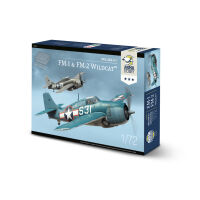
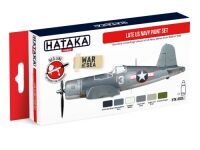






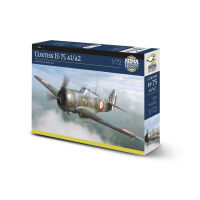

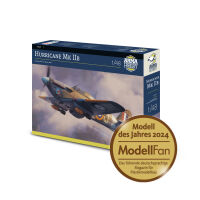

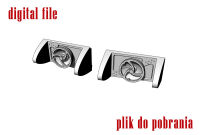
 Polish
Polish